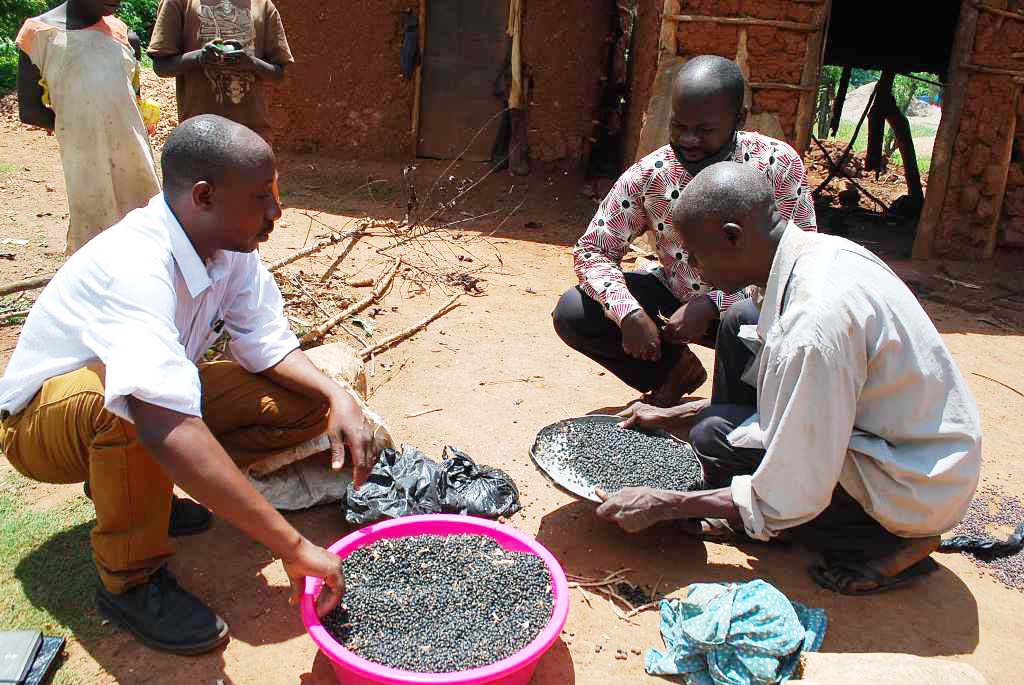Having paid three visits to Ugandan refugee camps, Joseph Kiirya Wagoina, 35, a resident of Jinja city, observed that the refugees are served with posho and rice, with a sauce featuring a unique paste of beans.
The small-black beans are the “Mungo beans”, which have enabled the refugees to prevail over life in the camps.
The beans are distributed in Maji and Numanzi refugee camps in Adjumani district and Bweyale refugee camp in Kiryandongo district, among others.
At times, the maize flour and beans are distributed to each beneficiary to prepare their meals.
The women and children, who double the men’s population, take the lion’s share of the project.
The beans of American origin have taken Uganda by storm and were accredited to reduce hunger in refugee camps, first in Uganda and later East Africa.
“They are small in size, but have a high nutrient content. Since inception, the beans have enabled us to prevail,” Anne Kemigisha, a mother of five in refugee camp, said.
Introduced by American researchers two years ago, the Mungo was certified to feed the escalating refugee population.
“With Uganda hosting over a million refugees, the early maturing and high-yielding bean should be the way to go,” Veronica Babirye Kadogo, the former Buyende Woman MP, said.
The beans are being promoted alongside the Red Noodle bean variety, which is also nutritious and high-yielding, thanks to the crop’s promoters, the Lutheran Church of Uganda.
Rev. Kaija, the executive director of the Seeds for Souls East Africa (SFSEA), said the beans are aimed at enabling the refugees continue with ‘normal life’ in Uganda and East Africa.
“We introduced them to improve livelihoods, for better nutrition and food security. For the church to thrive, the populace needs to be healthy,” Rev. Kaija said.
He said the beans are less tedious at harvest because the pods are simply hand-picked from the garden. In other varieties, whole stems are uprooted and carried home for drying.
The shelling of the beans is done using sticks and the winnowed, which is not the case with the Mungo beans.
“The dry pods are hand-picked and crashed at home. The seeds are winnowed and stored, ready for the market,” Edisa Kiiza , a farmer at Buwaiswa-Butadiba in Kamuli municipality, said.
Rev. Kaija added that the Mungo bean stems can be chopped for feeding livestock.
Farmers embrace enterprise
Over 200 farmers in 10 districts have embraced growing the Mungo bean and Red Noodle bean varieties.
The beans are being promoted to reduce hunger and poverty levels and improving food security in the public, with the dwellers in refugee camps being the first priority.
The beans mature in 90 days, with a kilo of seeds yielding 30-35 kilos.
The farm-gate price for the Mungo bean and the Red Noodle bean is sh7,000 per kilo, compared to the other varieties that fetch sh2,200-sh2,500 per kilo.
The beans are being promoted alongside the improved okra variety, popularly known as the African Lady Finger, whose farm-gate price per kilo is sh6,000.
In an acre, Mungo beans yield 1.2 tonnes, the Red noodle beans 2.3 tonnes, while okra yields 2.3 tonnes per acre.
The project is being promoted by Seeds for Souls East Africa (SFSEA) in partnership with the Lutheran Church of Uganda.






